-
BMWHaus Guru

BMW Art Cars
No 1:
[align=center]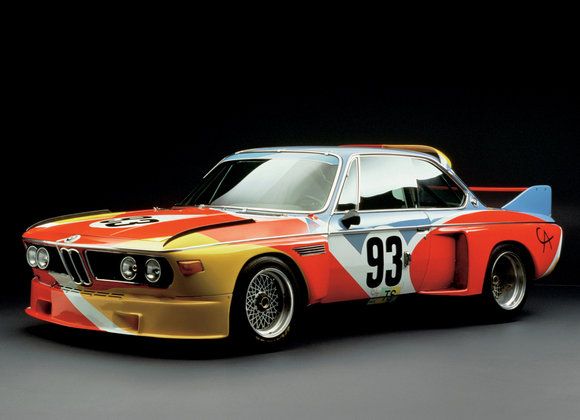 [/align]
[/align]
"The first time a BMW was transformed into a work of art was 1975. Alexander Calder was inspired by the French auctioneer and racing driver, Hervé Poulain, to produce the first ever BMW Art Car. The US artist only used primary colours and distributed them in broad swathes across the paintwork of the BMW 3.0 CSL. The use of differing colours within the individual elements of the car’s structure adds to the illusion of movement within the picture as a whole. Back then the fact that a car was being presented as a work of art was a sensation in itself. The greater sensation was that the selfsame 480 PS BMW was then entered for the 24-hour race in Le Mans. The world’s first BMW Art Car was also one of Calder’s last works of art as he died the same year it was unveiled."
No 2:
[align=center]
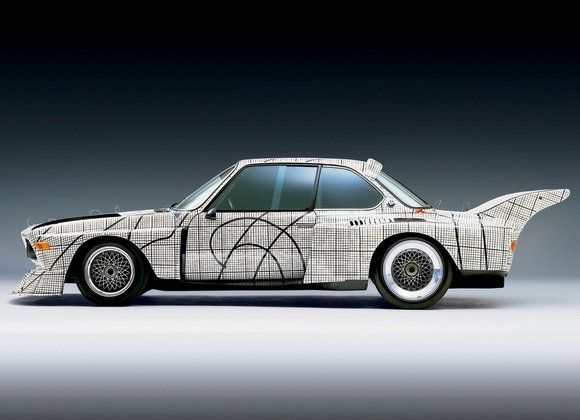 [/align]
[/align]
"In 1976 this BMW 3.0 CSL shot around the race circuit at 300 km/h at the Le Mans 24-hour race which is nothing out of the ordinary for a BMW race car. What did stand out was the fact that it was a high-speed Art Car designed by Frank Stella. The presentation of the world’s second Art Car generated immense anticipation as the art world was still under the spell of the first BMW Art Car. These expectations were more than satisfied as Stella devised a black and white design based on oversize graph paper. Cut-out lines all over the bodywork intensify the geometric look of the car. Explaining the thinking behind his high-speed work of art, Frank Stella, born in 1936 said, ‘My design is a kind of blueprint applied to the entire body of the car’."
No 3:
[align=center]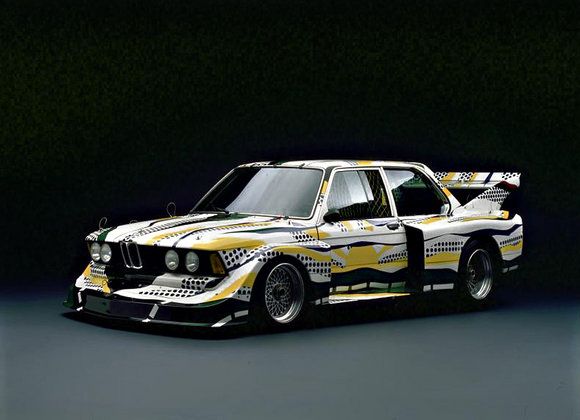 [/align]
[/align]
"Car three by Roy Lichtenstein is one of the most popular of all the Art Cars; the BMW 320 Group 5. The artist had this to say on the fruit of his labours: ‘I invested as much thought and effort as possible’. Undeniably! The result of these efforts is a harmonious combination of the aerodynamics in the bodywork with the aesthetics of his art; after all it is one of the fastest moving pieces of art the world has ever seen. Lichtenstein’s famous comic strip style is reflected in the paintwork. ‘The painted lines symbolise the road the car has to follow and the artwork also portrays the surroundings through which the car is being driven’."
No 4:
[align=center]
 [/align]
[/align]
"This Art Car is one of the highlights of the collection of artworks on wheels. No lesser person than Andy Warhol immortalised himself in this M1. He even took responsibility for transferring the smaller scale design to the actual bodywork himself with only the aid of his assistant. Warhol explained the bold, bright and lucid brush and finger strokes on the Art Car BMW M1 thus: ‘I tried to portray a sense of speed. When a car is going really fast all the lines and colours become a blur’. Immense speeds were also achieved by this 470 bhp six cylinder automobile at the Le Mans 24-hour race at which the BMW gained the second position in its class. The M1 still finished the race as a winner – definitely in the eyes of the public who were captivated by the sight of this dashing canvas."
No 5:
[align=center]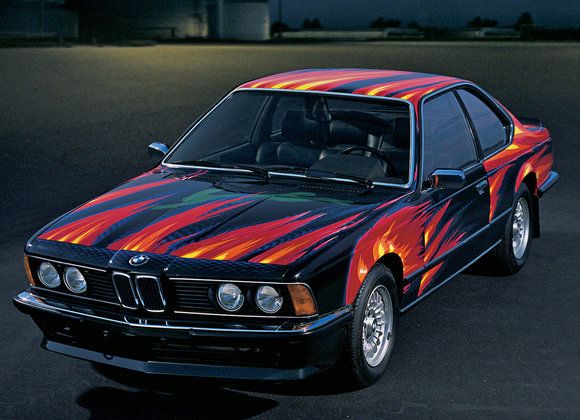 [/align]
[/align]
"Two ‘firsts’: This was the first Art Car to be created using a serial production BMW and the first Art Car to be enhanced by a European artist, namely by the Vienna art professor, Ernst Fuchs. For the ‘Art as illustration – illustration as art’ exhibition Fuchs was extremely creative in decorating the bodywork of the BMW 635CSi. Ultimately the bodywork served as a screen upon which he was able to project his imagination. Fuchs described his work thus: ‘When painting this car I was able to express a wide range of experiences, fears, desires and invocations, as well as aesthetic, artistic freedom’. ‘A rabbit can be seen running across the motorway at night and leaping over a burning car – a primal fear and a daring dream of defeating the dimensions within which we live. It tells me which colours to choose. I read its lines, its shape and I can hear its call to speed. I see this beautiful rabbit jump through the flames of love – defeating fear itself...’"
No 6:
[align=center]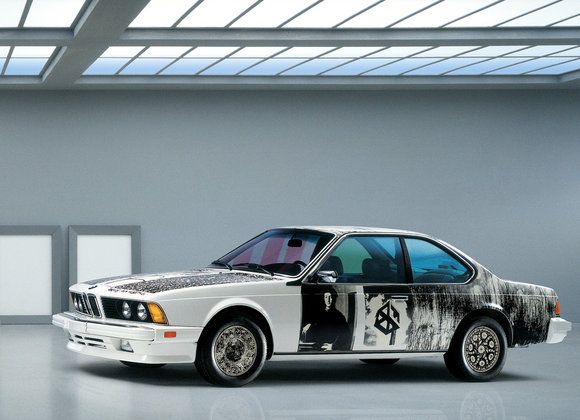 [/align]
[/align]
"Driveable museums would be great. This car is a dream come true for me, gushed Rauschenberg after the presentation of his Art Car in New York. This BMW 635CSi was the sixth Art Car, yet was the first to have its bodywork decorated with photographic material. The right side bears the image of an Ingres painting. The left hand side of the bodywork is adorned with one of Bronzino’s works, surrounded by Rauschenberg’s own pictures of swamp grass in the Everglades - the hub caps have been painted with images of ancient decorative plates. Rauschenberg must have been pleased with the results as he used the motifs on this Art Car for a subsequent work of art a couple of years later."
No 7:
[align=center]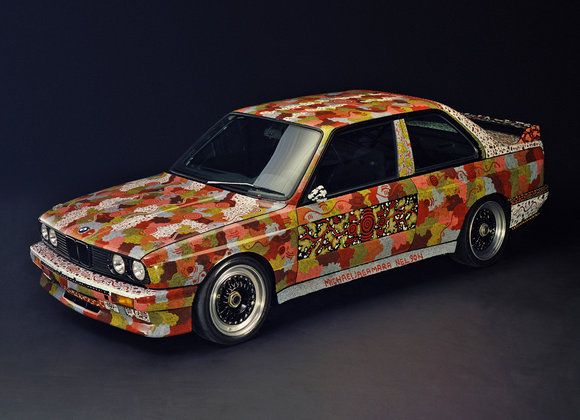 [/align]
[/align]
"All good things take time. In just seven days the Australian artist Michael Jagamara Nelson transformed a black BMW M3 into a masterpiece of Papunya art. Nelson learned this ancient method of painting from his grandfather and was awarded the national prize for aboriginal art. Papunya artists paint traditional sand picture shapes and forms on canvases; in this case onto the bodywork of a BMW M3. The seemingly abstract, mosaic-like Papunya paintings symbolise landscapes and animals.
The age of this method of painting was in stark contrast to that of the technology in the eighth BMW Art Car. The 300 bhp Art Car was an immense success in Australian motorsport back then as Tony Longhurst won the Australian championship in 1987 in one of the same cars."
No 8:
[align=center]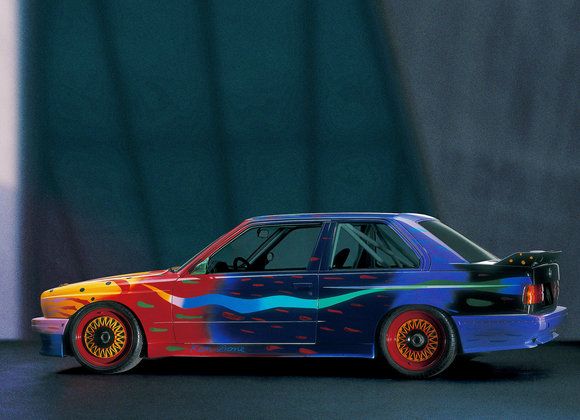 [/align]
[/align]
"What do Art Car no. 7 and 8 have in common? Both were created using the same model - a BMW M3 racing car - and both were adorned with the work of Australian artists. Anyone looking for visual similarities will do so in vain, as these contradictory models are representations of the two main antithetic cultures of the Australian continent. As with the rest of his artwork, Done was not mean with his use of colours on this Art Car. The bright colours and powerful brush strokes are symbolic of modern Australia with its sunny beaches and semi-tropical landscapes. All these impressions of life and joy are embodied by Art Car 7. The bodywork is emblazoned with an abstract portrayal of parrots and parrot fish. What do these animals symbolise? Explaining his creation, Done explained his work as follows: ‘Both are beautiful and move a fantastic speeds. I wanted to express this with the BMW Art Car’."
No 9:
[align=center] [/align]
[/align]
"The Japanese artist, Matazo Kayama, was presented with a six cylinder in-line engine, 211 bhp BMW 535i to serve as a fresh canvas for his creation. He based his Art Car design on a contract piece done for Tokyo National Museum of Arts. However, by using airbrush techniques he was able to produce a completely new interpretation of the original theme – ‘Snow, moon and cherry blossoms’. Kayama used typical Japanese techniques such as Kirigane (metalcut) and Arare (foil printing). Having completed the Art Car the artist had this to say: ‘I only became completely aware of the clarity in the lineal design of the BMW after having seen the car in its new coloured robes’"
 Posting Permissions
Posting Permissions
- You may not post new threads
- You may not post replies
- You may not post attachments
- You may not edit your posts
-
Forum Rules
[/align]
[/align]
[/align]
[/align]
[/align]
[/align]
[/align]
[/align]
[/align]






 Reply With Quote
Reply With Quote